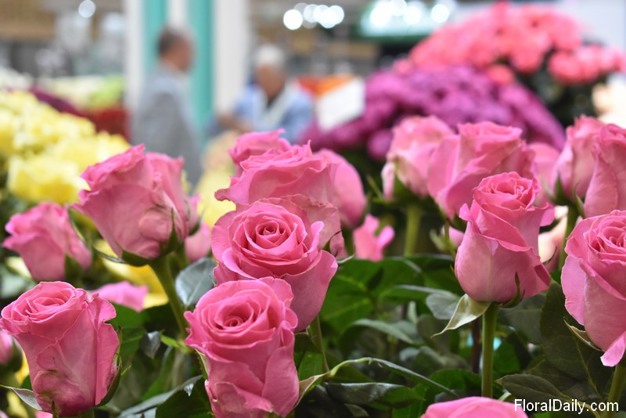During Proflora last week, we learned a lot about the potential and challenges of the Colombian flower industry. But how are the stats, and how did the sector develop over the years? In this article, more information about the industry and export numbers from 2022, provided by the Association of Flower Exporters, Asocolflores.

Production acreage
With 10,000+ ha of flower acreage, Colombia ranks first with 32.2% of the total flower and plants are among the exporting counties like the Netherlands (7,870ha), Ecuador (7,467ha), Kenya (4.039 ha) and Ethiopia (1,695 ha). From the 10,000ha, the majority of the flowers are produced in Cundinamarca (71%), followed by Antioquia (27%) and Centerwest (2%). The diversity of flowers produced is large, consisting of roses (19.1%), Carnations (13.4%), Chrysanthemum (8.6%), Hydrangea (4.4%), Alstroemeria (3.9%) and 46.6% consisting of other species.

Exports
Colombia exports flowers to over 100 destinations. In 2022, the export value was 2 billion (+19% compared to 2021), and the export volume was 320,000 tons (+5% compared to 2021). The majority of the flowers produced in Colombia go to the United States. In 2022, the value exported was 1.636 Million USD and saw an increase of 22% compared to 2021. Also, the other way around, Colombia is important to the US as 80% of the bouquets imported from the US are Colombian flowers.
Coming back to export values from Colombia around the world, Japan follows with 103 Million USD, then Canada with 66 Million, the UK with 60 Million USD, the Netherlands with 51 Million USD, and Spain with 36 Million USD. In 2022, the value of exported products to all these countries increased compared to 2021. The majority of the flowers are still being shipped via air, namely 92%, and the rest (8%) are shipped by ocean. This is still a small percentage, but over the years, it has increased, and increasingly, more solutions are being presented to promote the sea shipment of flowers.
Formal jobs
The floriculture industry in Colombia did a lot for their people as it offers 200,000 formal jobs, of which 110,000 are direct. Of these direct jobs, 60% are occupied by women, of which 55% are head of household. In general, 28% of the total formal jobs in the agro are from the floricultural industry, and 70% of the total formal jobs in the agro are occupied by women from the floricultural industry.
How will 2023 be?
As the year hasn't come to a close, no comparisons can be made yet. However, it is clear that the flower industry, in general, had to wake up from the '2-year COVID dream'. In order to continue and support the global sales of flowers, associations around the world are working together. The Network Lunch organized by Asoscolflores during the Proflora trade show is such an example.
 Click here for the FloralDaily photo report.
Click here for the FloralDaily photo report.
Proflora
So, how was Proflora? The 30th edition took place last week, and FloralDaily.com was present to make a photo report of Proflora. The trade show offered another opportunity to see and learn more about the Colombian flower industry. In total, 300+ exhibitors presented their products and services during the three official exhibition days and received more than 6,500 visitors.
When the exhibition center closed its doors, the flowers that were on display were offered a second life; they were donated to the Colombian Navy, which celebrated and commemorated military and civilian personnel with these flowers.
For more information: Asocolflores
Asocolflores
www.asocolflores.org










